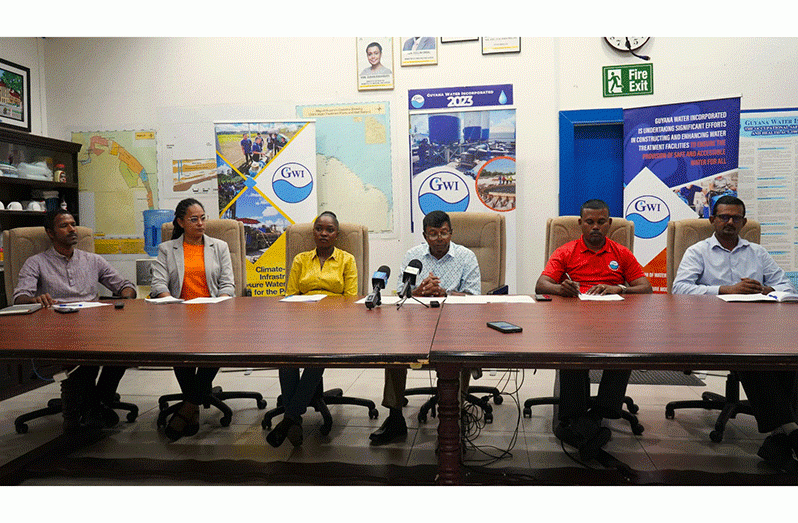DUE to the El Niňo weather phenomenon, the Guyana Water Inc. (GWI) is asking people to save water, and report any incident of wastage.
“We want to appeal to residents to be more prudent and cautious in the use of water during this period, so that everyone could enjoy an adequate level of service,” Chief Executive Officer (CEO) Shaik Baksh told a recent media briefing at GWI’s headquarters at Shelterbelt, Georgetown.
The utility is working closely with the Civil Defence Commission (CDC), the National Drainage and Irrigation Authority (NDIA) and other agencies in monitoring the situation.
Visits have been made to all ten of the country’s administrative regions, and from what has been observed, the hinterland regions have been most affected, due to depletion in supply of surface water, which essentially means water found in such places as creeks, rivers, lakes and springs among other freshwater sources.
At Salbora, in Region Eight (Potaro-Siparuni), the creek there is depleted by some 80 per cent, and at Madhia, in Region Seven (Cuyuni-Mazaruni), where there are two wells, the residents are still encountering some hardships.
As an emergency measure, Mr. Baksh said, the GWI is moving to drill a new well in Madhia to bring relief to the residents of the township and surrounding communities.
And in Region One (Barima-Waini), the villages of Mabaruma, Matthews Ridge, Port Kaituma and other areas are also experiencing low water supply, due to depletion of springs there, notwithstanding that there are wells in these sub-regions.
Mr. Baksh also reported that the static level of the wells in Kamarang and Jawala, in Region Seven, has been reduced, and the hand-dug wells in Region Nine (Upper Takutu-Upper Essequibo) are drying up.
However, the deep or climate-resilient wells in the region have been responding well to the extreme dry weather, in that where they are located, residents have not been experiencing hardship.
GWI plans to drill wells in all hinterland communities, with 40 scheduled for this year, and another 50 to 60 for next year. This massive programme is set to ensure that the government achieves its goal of 100% access to stable water supply in the hinterland regions by 2025.
The coastal belt has high water demand from households and farming communities, but the wells are producing water at maximum capacity.
In Regions Two (Pomeroon-Supenaam), Three (Essequibo Islands-West Demerara), and Four (Demerara-Mahaica), the water supply has been stable, with some areas experiencing a lower level of service. Notably, the Lama Canal, which supplies water to about 60 to 80 per cent of Georgetown residents, has not experienced a drop, but in Regions Five (Mahaica-Berbice) and Six (East Berbice-Corentyne), residents are experiencing a small drop in the level of service. Mr. Baksh said that to address this situation, the GWI is supplying water on a 24-hour basis, and at maximum level in these regions. The GWI is also undertaking an intensive well-maintenance programme to keep supply stable in the long-term.
Aside from El Niňo, power outages have been affecting water supply in all the regions on the coastal belt, as well as contractors damaging water infrastructure across the country. GWI is urging residents to report these contractors, so that they could be held accountable for their action.



.jpg)








